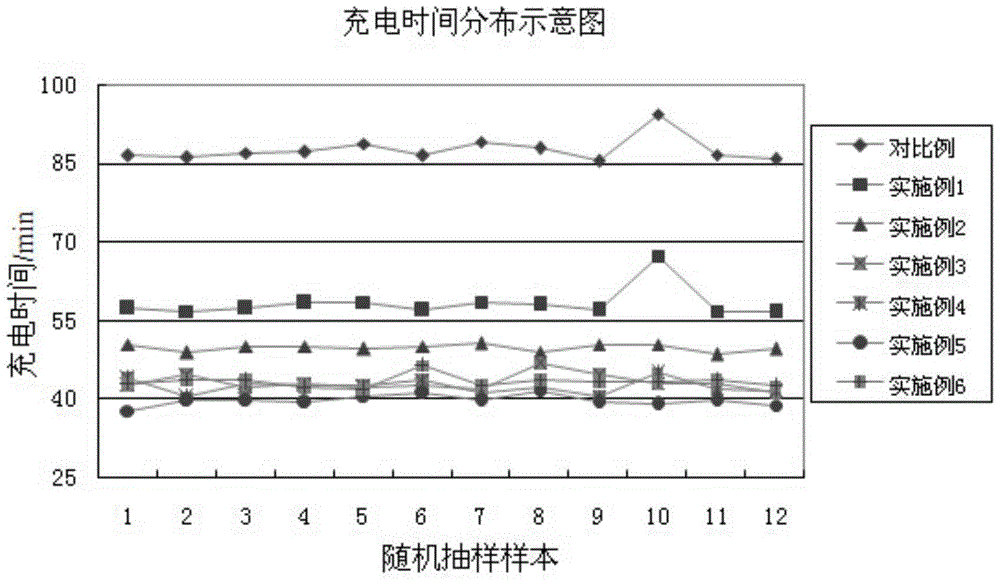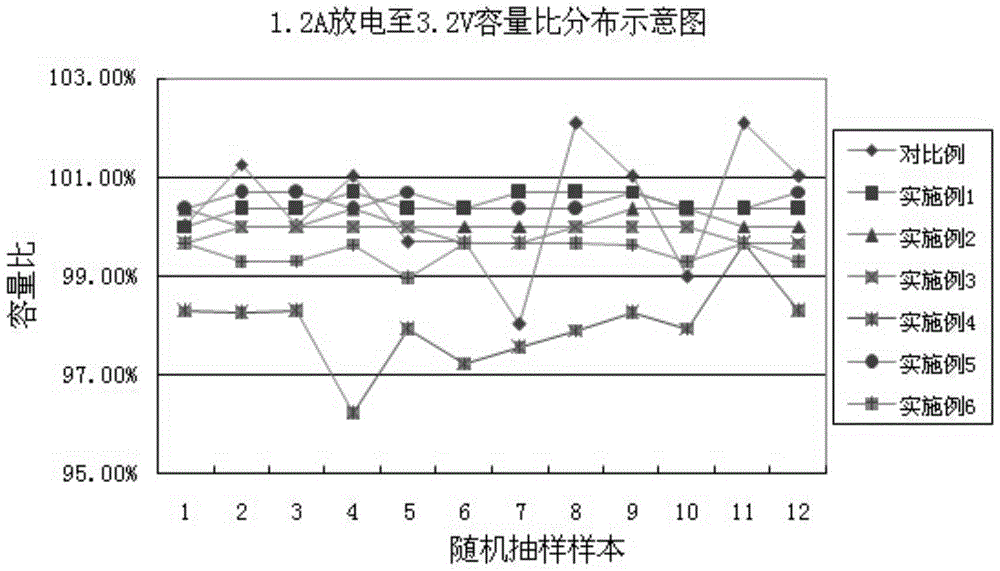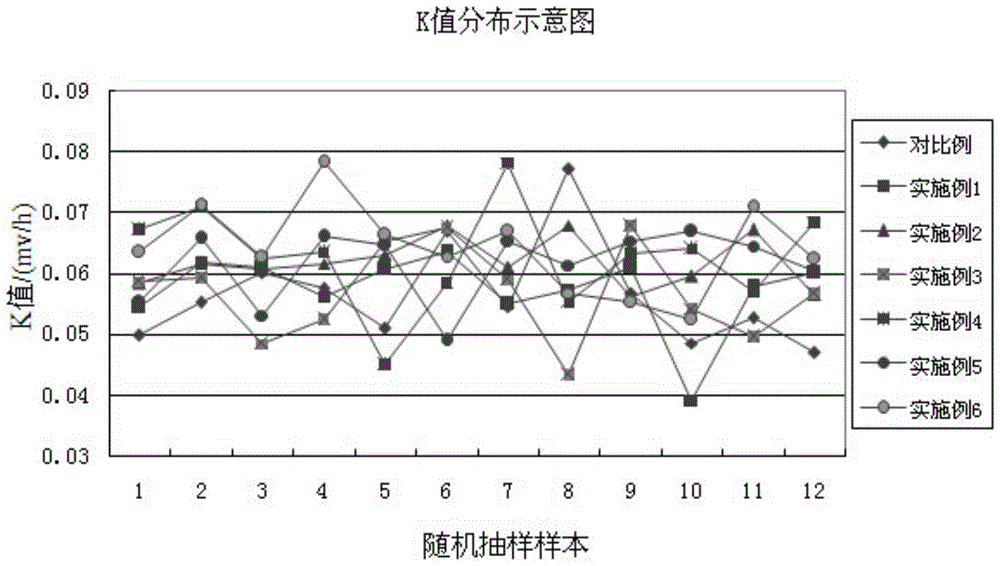A method for dividing the capacity of special-shaped lithium-ion batteries
A technology of lithium-ion batteries and ion batteries, which is applied in the manufacture of non-aqueous electrolyte batteries, electrolyte batteries, secondary battery charging/discharging, etc., and can solve problems such as long capacity division cycle, unfavorable factory production, and increased input cost of capacity division cabinets. , to achieve the effects of improving market competitiveness, reducing production costs, and shortening the time for volume distribution
- Summary
- Abstract
- Description
- Claims
- Application Information
AI Technical Summary
Problems solved by technology
Method used
Image
Examples
Embodiment 1
[0020] For the heat-sealed special-shaped lithium-ion battery, the capacity is divided at room temperature. When dividing the capacity, it is not necessary to discharge first, but to charge directly. The specific capacity division steps are as follows:
[0021] First, carry out the first charging stage, charge at 2.0C constant current and constant voltage, cut-off current 0.02C to 4.2V, and put it aside for 5 minutes;
[0022] Then carry out the second discharge stage, discharge to 3.2V at 1200mA, and leave for 5min;
[0023] Carry out the second charging stage again, charge to 4.2V with 2.0C constant current and constant voltage, cut-off current 7mA, and put it aside for 5min;
[0024] Carry out the third charging stage again, charge to 4.2V with 0.02C constant current and constant voltage, cut-off current 7mA, and complete the capacity division.
[0025] Among them, 12 special-shaped lithium-ion batteries were randomly selected to record their charging time, and at the same...
Embodiment 2
[0027] For the heat-sealed special-shaped lithium-ion battery, the capacity is divided at room temperature. When the capacity is divided, it is not necessary to discharge first, but directly to the charging stage. The specific capacity division steps are:
[0028] First, carry out the first charging stage, charge at 3.0C constant current and constant voltage, cut-off current 0.02C to 4.2V, and put it aside for 5 minutes;
[0029] Then carry out the second discharge stage, discharge to 3.2V at 1200mA, and leave for 5min;
[0030] Carry out the second charging stage again, charge to 4.2V with 3.0C constant current and constant voltage, cut-off current 7mA, and put it aside for 5min;
[0031] Carry out the third charging stage again, charge to 4.2V with 0.02C constant current and constant voltage, cut-off current 7mA, and complete the capacity division.
[0032] Among them, 12 special-shaped lithium-ion batteries were randomly selected to record their charging time, and at the s...
Embodiment 3
[0034] For the heat-sealed special-shaped lithium-ion battery, the capacity is divided at room temperature. When the capacity is divided, it is not necessary to discharge first, but directly to the charging stage. The specific capacity division steps are:
[0035] First, carry out the first charging stage, charge at 4.0C constant current and constant voltage, cut-off current 0.02C to 4.2V, and put it aside for 5 minutes;
[0036] Then carry out the second discharge stage, discharge to 3.2V at 1200mA, and leave for 5min;
[0037] Carry out the second charging stage again, charge to 4.2V with 4.0C constant current and constant voltage, cut-off current 7mA, and put it aside for 5min;
[0038] Carry out the third charging stage again, charge to 4.2V with 0.02C constant current and constant voltage, cut-off current 7mA, and complete the capacity division.
[0039] Among them, 12 special-shaped lithium-ion batteries were randomly selected to record their charging time, and at the s...
PUM
 Login to View More
Login to View More Abstract
Description
Claims
Application Information
 Login to View More
Login to View More - R&D
- Intellectual Property
- Life Sciences
- Materials
- Tech Scout
- Unparalleled Data Quality
- Higher Quality Content
- 60% Fewer Hallucinations
Browse by: Latest US Patents, China's latest patents, Technical Efficacy Thesaurus, Application Domain, Technology Topic, Popular Technical Reports.
© 2025 PatSnap. All rights reserved.Legal|Privacy policy|Modern Slavery Act Transparency Statement|Sitemap|About US| Contact US: help@patsnap.com



